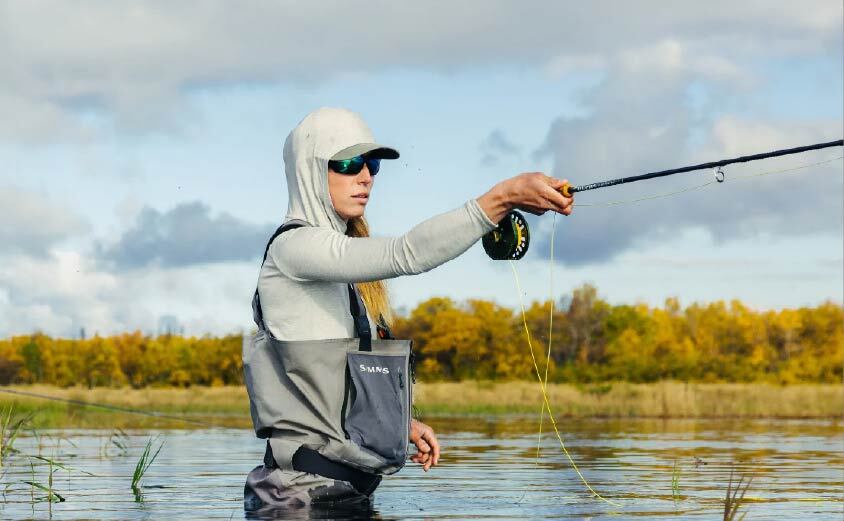Exploring Untapped Demand in Mexico Fishing Clothing Market: A Guide for Emerging Brands

“The Mexico fishing clothing market presents a diverse array of untapped opportunities aligned with the country's abundant coastal and inland fisheries, the burgeoning sportfishing tourism sector, and the evolving preferences of local anglers who fish year-round in varying climates. Coastal regions including Baja California, the Gulf of California, Sinaloa, Nayarit, Jalisco, and the Yucatan Peninsula attract both offshore and inshore anglers who require saltwater-ready apparel featuring rapid-dry fabrics, long-lasting sun protection, and corrosion-resistant trims designed to withstand repeated boat spray and high salinity.”
Mexico fishing clothing market was valued at USD 14.26 million in 2024 and is estimated to reach a value of USD 20.85 million by 2032 with a CAGR of 5.0% during the forecast period.
Purpose-built collections for hot and humid conditions may incorporate ultra-light knits, mesh ventilation, and cooling yarns, while rainy season lines can emphasize breathable rain shells with durable water-repellent finishes that allow airflow during extended boat rides. Additionally, mangrove and lagoon fisheries provide a niche for insect-repellent fabric treatments and stain-release finishes that handle mud and bait without compromising comfort.
Freshwater anglers in regions such as El Salto and Lake Chapala require a different mix of warmth, wind resistance, and stretchable pants and shirts suited for long hikes to remote banks. This opens opportunities for region-specific lines reflecting Mexico's unique microclimates. Sustainability represents a significant whitespace, as products made from recycled polyester, organic cotton, and bio-based water repellents appeal to both tourists and local consumers who prioritize the preservation of reefs and estuaries.
Brands can establish circular programs that offer repair services, resale of refurbished garments, and take-back credits to minimize waste while fostering loyalty among guides and charter crews who frequently cycle through their gear. There is also substantial potential for design localization, with graphics, colors, and trims inspired by Mexican marine life, regional festivals, and indigenous artistry, helping products stand out in crowded digital markets and coastal marinas.
Women and youth remain underserved segments, indicating potential for expanded size ranges, sport-specific fits, and comfort-oriented features such as softer neck gaiters, lighter sun hoodies, and adjustable waist fishing pants, which can drive incremental demand. Partnerships with charter operations in locations like Los Cabos, La Paz, Mazatlan, Puerto Vallarta, Cancun, and Cozumel can facilitate a rental and “try before you buy” model, allowing visitors to test premium shirts and jackets during their trips, subsequently purchasing new versions online post-visit, thus generating cross-border revenue streams.
Technical tees and sun hoodies featuring high UPF ratings, anti-odor treatments, and quick-dry performance can easily crossover into beach and active lifestyle markets, expanding the customer base beyond dedicated anglers. Additionally, the incorporation of smart pocket systems and modular storage for securing pliers, leader spools, and licenses, alongside low-profile reflective details for enhanced safety during early morning and nighttime pier activities, adds value without compromising aesthetics.
The growth of e-commerce represents another avenue for expansion, particularly since many coastal towns lack specialty retail options. Direct-to-consumer channels equipped with bilingual education, fit guides, and climate-based product filters can significantly improve conversion rates and reduce returns. Local production and nearshore assembly can lead to shorter lead times for hurricane season rainwear and event-driven collections tied to fishing tournaments.
Price architecture also presents opportunities through a tiered approach offering accessible mid-range kits that include a sun shirt, convertible pants, and a neck gaiter, while premium lines can incorporate features like bonded seams, laser-cut vents, and advanced membrane rain shells tailored for tournament anglers. Accessories merit additional focus, including sun hats equipped with secure under-chin cords for windy conditions, half-finger gloves for line handling, and lightweight waders designed for cool season river fishing in the Sierra regions.
Marketing strategies can emphasize education, providing content that explains when to prioritize breathability over full waterproof capabilities, appropriate rinsing techniques after salt exposure, and the benefits of utilizing anti-corrosion hardware to extend zipper and snap longevity. Retail placements in airports, cruise terminals, and marina kiosks can effectively capture impulse purchases from travelers who may have underpacked.
Collaborations with fisheries cooperatives and conservation organizations can enhance credibility through limited-edition products that support habitat projects while providing traceable impact reports. Finally, applying data-driven design insights gleaned from guides can refine fits to accommodate long hours seated in pangas, optimize seam placements to avoid discomfort, and adjust sun hood shapes for comfort under caps. Collectively, these opportunities position Mexico as an attractive market for differentiated fishing apparel that integrates climate-responsive performance, culturally relevant design, inclusive sizing, sustainable materials, and efficient distribution, thereby creating a durable competitive edge for early market entrants.